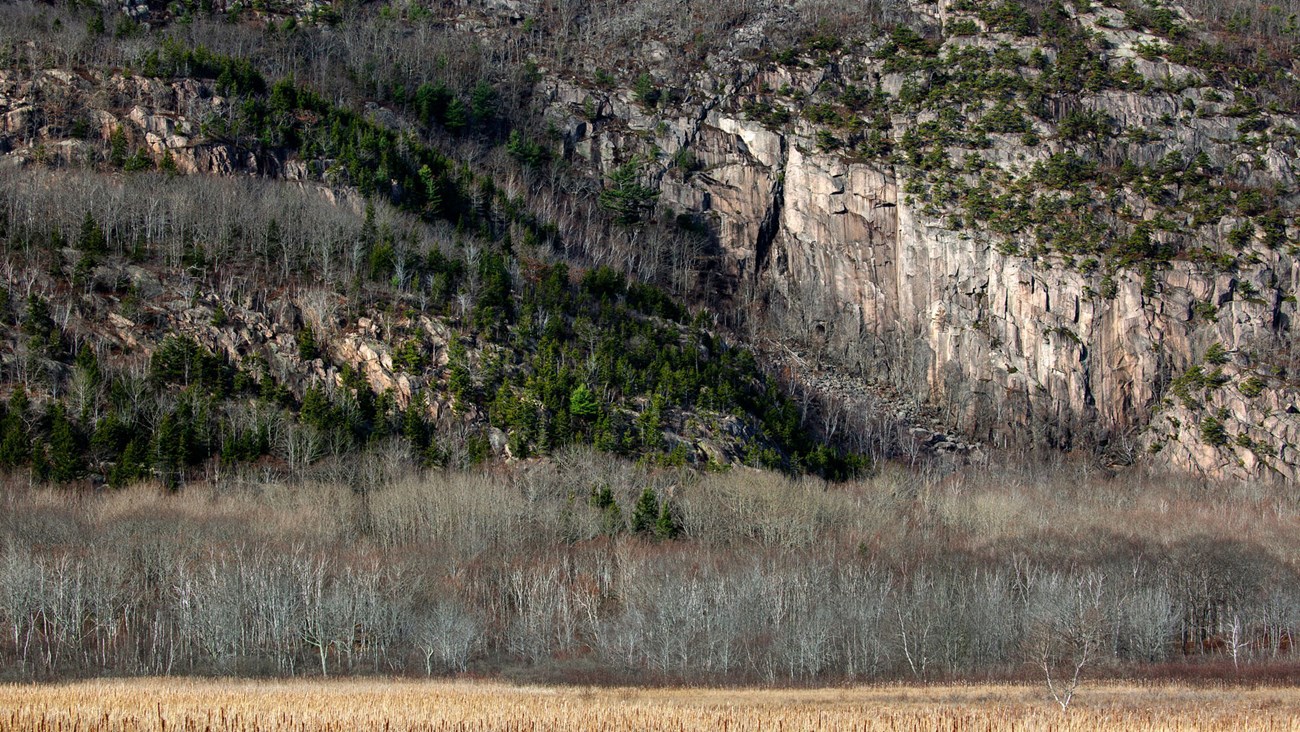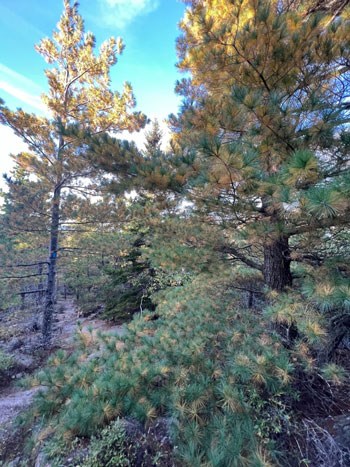
Many of Acadia's conifers are currently under threat from various pests and diseases including the red pine scale and hemlock woolly adelgid. Unfortunately, many of Acadia's once evergreen mountainsides are now grey due to the large die off of red pines due to this disease. Rapid environmental change, such as climate change, is stressing many of Acadia's trees which leaves them more susceptible to disease and insects. You can help protect Acadia's conifers by not disturbing them during your visit and reducing your carbon footprint during your visit by riding the island explorer, and walking or biking whenever possible. What is (and isn't) a Conifer?A conifer is a cone bearing plant. Conifer trees are also called a softwood trees, as opposed to deciduous trees which drop their broadleaves and are known as hardwood trees. Confers typically have a distinctive leaf shape called 'needles,' and cones that fall to our feet. Those cones, if they are female, produce seeds, which either grow a new tree where they fell or are eaten by birds and other animals and are therefore carried to new areas to germinate. The male cones, which are much smaller, only contain pollen. Acadia's Common Conifer TreesSpruceSpruce needles are single needles emanating around a branch and have four sides. Because of the four sided structure they can be easily rolled between your fingers. Normally they feel spikey to the touch. Red spruce (Picea rubens) is the more common spruce species you will see here at Acadia followed by White spruce (P. glauca) and Black spruce (P. mariana). 
PinesPine needles are in groups of 2, 3 or 5 and are longer and softer than spruce and fir needles. The Eastern White Pines is the state tree of Maine and for good reason. They grace the forest with their tall, straight trunks and, growing at up to 1 foot per year, are often the tallest tree in Acadia's forest. White pine occurs in all environments including moist environment, uplands, and on sandy soil, but develops best in fertile, well-drained soils. Threats to Acadia's ConifersTrees and other forest plants have always been under threat by people, diseases, and pests such as insects. The white pine weevil is an insect that kills the topmost shoot and often causes the tree to have multiple stems and a round profile. The hemlock woolly adelgid (Adelges tsugae) are non-native, invasive, aphid-like insects that inevitably kill Eastern hemlock trees. With warming temperatures, the adelgid is moving north and has now been confirmed in Acadia.The invasive red pine scale (Matsucoccus matsumurae), also known as Japanese pine bast scale, was detected near Norumbega Mountain in the town of Mount Desert and Acadia National Park in September, 2014 . This was the first known occurrence in the State of Maine. The red pine scale insect is native to Japan but arrived in the United States in 1946. The scale insect is about the size of a pin-head and covers itself with a protected white woolly substance that is visible on branches. While red pine trees are a minor component of Acadia’s forests, they provide value for wildlife. Today, many hillsides in Acadia can now seem barren due to the amount of dead red pine in the park. |
Last updated: October 11, 2024
